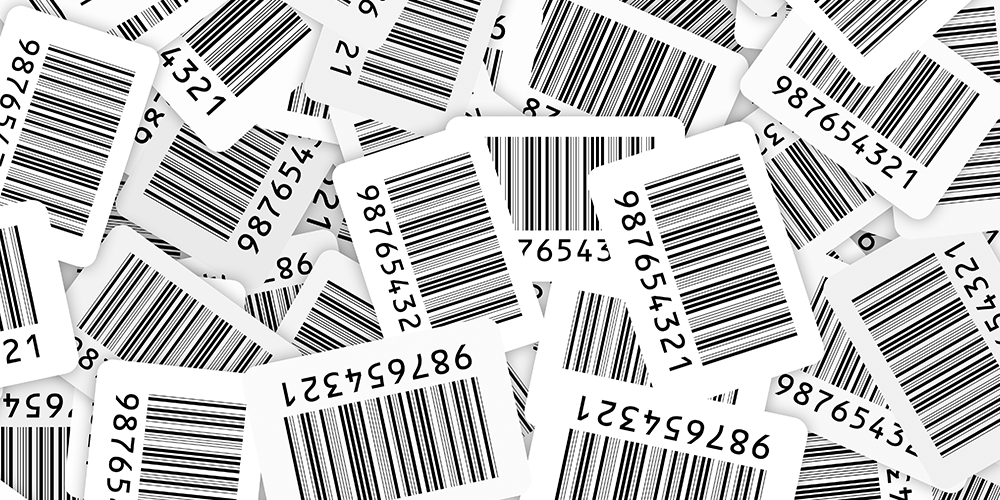Barcode Label Printing Tips for Retail Success

How to Print Barcodes for Retail and Inventory
Printing barcodes for retail is a smart way to manage inventory, speed up checkouts, and keep products organized. With the right approach, you can create high-quality labels that look professional and scan easily. From selecting materials to printing efficiently, here’s how to get started.
Step 1: Choose the Right Label Material
Picking the right label material is key to making sure your barcode labels stay readable and durable. The best material depends on where the labels will be used, how long they need to last, and what they’ll be exposed to. Here’s what to consider:
- Need something affordable for short-term use? Go with paper barcode labels—great for indoor use, shipping labels, and office organization.
- Printing barcodes for products that need to last? Polyester labels are water-resistant, tear-proof, and great for long-term durability.
- Labels exposed to heat, chemicals, or outdoor conditions? Polypropylene or polyester labels hold up best in tough environments.
- Using a thermal printer? Choose between direct thermal labels (for short-term use like shipping) or thermal transfer labels (for long-lasting, high-quality prints).
- Need something that removes cleanly? Removable adhesive labels are perfect for temporary applications where you don’t want sticky residue.
By choosing the right material, you ensure your barcodes stay readable, last as long as needed, and perform well in your specific environment.

Step 2: Select the Right Printer For Barcodes
The type of printer you use determines the quality and durability of your labels. Here’s a guide to choosing the right one:
- Thermal Transfer Printers – Ideal for long-lasting, durable labels used in inventory management, asset tracking, and industrial applications. Great for labels exposed to heat, moisture, or heavy handling.
- Direct Thermal Printers – Best for short-term labels like shipping, receipts, and pricing tags. No ribbon required, but prints can fade over time.
- Laser Printers – Excellent for waterproof and smudge-resistant labels, especially for office and warehouse applications. Efficient for high-volume printing.
- Inkjet Printers – Best for vibrant, full-color labels in small batches. Great for branding and product packaging but may not be as durable.
Pro Tip: Test Compatibility
Always check that your labels work with your printer to avoid smudging or alignment issues.

Step 3: Design Barcode Labels That Work
A good label is clear, simple, and functional. Follow these tips to create labels that scan easily:
- Focus on the Barcode: Make it large and easy to scan.
- Add Essential Details: Include product names, prices, or SKUs, but avoid overcrowding the label.
- Use a Template: Many barcode printer labels come with free templates to simplify design. If your printer does not offer this feature, check out the free blank label templates on our site.

Step 4: Print and Apply
Once your design is ready, follow these steps to print and apply your labels:
- Load Labels Properly: Ensure blank labels or printable barcode labels are aligned in the printer to avoid jams.
- Adjust Printer Settings: Match the settings to your label materials, like matte, glossy, or waterproof finishes.
- Apply with Care: Place labels flat to avoid wrinkles, ensuring barcodes remain easy to scan.
Step 5: Organize with Barcodes
Now that your labels are printed, use them to streamline operations. Barcoding labels make it easier to:
- Track inventory with real-time updates.
- Simplify checkout by adding labels with barcodes to your products.
- Keep stock organized by assigning barcodes to each item.
Why Choosing the Right Barcode Labels Matters
Using the wrong label materials or printing methods can lead to issues like unreadable barcodes, smudging, or peeling. Durable materials, such as thermal barcode labels, help ensure your barcodes stay scannable.
Ready to start? Check out our blank barcode labels to level up your inventory system.
And make sure to check out our article on how to improve logistics with barcode labeling. We break down cost-effectiveness and how to optimize warehouse operations.
FAQs
How do I create a barcode for my inventory?
To create a barcode, start by assigning each product a unique code, such as a SKU or item number. Use barcode generator software to convert these codes into scannable barcodes. Once created, print them onto blank labels or custom barcode labels using a compatible printer.
What type of barcode is best for inventory?
The best barcode depends on your inventory needs. 1D barcodes (like UPC or Code 128) are great for simple product tracking, while 2D barcodes (like QR codes) store more data, such as batch numbers or expiration dates, making them ideal for detailed inventory management.
What’s the best material for barcoding labels?
For long-lasting and durable labels, polyester or polypropylene materials are the best options. These materials resist water, heat, and chemicals, making them ideal for industrial or outdoor use.
If your needs are short-term or temporary, paper labels are more cost-effective and work well for everyday product labels like shipping or pricing tags.
Can I use any printer for barcode label printing?
Technically, you can print a barcode on any printer, but some printers are better suited for barcode label printing. Thermal transfer printers provide the most durable results, while direct thermal printers work for short-term use. Inkjet and laser printers can print barcodes, but they require high resolution and compatible label materials to ensure scannability.
How do I make sure my barcodes are easy to scan?
A clear and simple design is key to ensuring your barcodes scan correctly. Use a high-contrast color scheme, such as black bars on a white background, and leave enough space (called the "quiet zone") around the barcode.
Avoid making the barcode too small or placing it on curved or uneven surfaces. Always test your printed labels with a scanner to catch alignment or readability issues before applying them to products.


